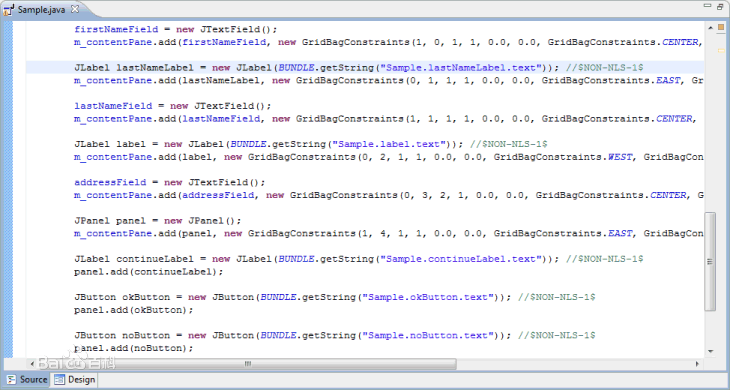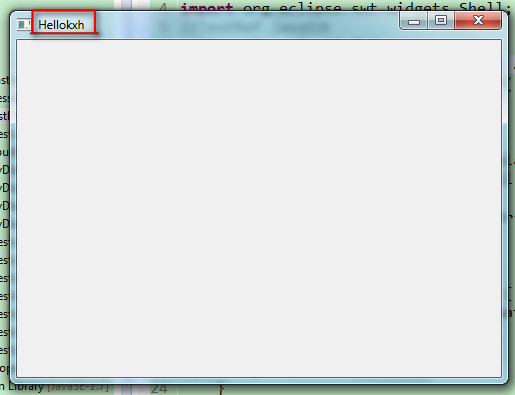关于国际化中的$NON-NLS-1$
百度百科解释:
这实际与eclipse中支持i18n的一种方式,eclipse的标准结构,将所有string常量定义到·properties中,例如下面程序段中的TestRef.hello实际上是·properties中的一个key TestRef.hello=Hello
eclipse时,经常在官方的例子中看到一些奇怪的注释,例如: shell.setText(Messages.getString("TestRef.hello")); //$NON-NLS-1$
这$NON-NLS-1$到底代表什么呢?当时在一阵浅尝辄止之后,也就忽略了这个问题,如下图:

现在大家也许对注释$NON-NLS-1$的含义就能够猜到个大概了,我个人猜测他也许就是non need localize string 1的缩写。
rcp的文档里是这样表述的The string $NON-NLS-1$ is a hint for both the compiler and the Externalization(客观性,外表性,外部化) wizard that the first character string on this line is a tag or keyword of some sort and should not be localized.
也就是说$NON-NLS-1$表明本行的第一个string型变量是一个标签或者关键字,不需要被本地化.
TestRef.java文件
1 import org.eclipse.swt.widgets.Display; 2 import org.eclipse.swt.widgets.Shell; 3 //TestRef.java文件 4 public class TestRef { 5 public static void main(String[] args) { 6 TestRef window = new TestRef(); 7 window.open(); 8 } 9 public void open() { 10 final Display display = Display.getDefault(); 11 final Shell shell = new Shell(); 12 shell.setSize(500, 375); 13 shell.setText(Messages.getString("TestRef.hello")); 14 15 shell.layout(); 16 shell.open(); 17 while (!shell.isDisposed()) { 18 if (!display.readAndDispatch()) { 19 display.sleep(); 20 } 21 } 22 } 23 }
Messages.java
1 import java.util.MissingResourceException; 2 import java.util.ResourceBundle; 3 4 //Messages.java文件 5 public class Messages { 6 private static final String BUNDLE_NAME = "test";//$NON-NLS-1$ 7 private static final ResourceBundle RESOURCE_BUNDLE = ResourceBundle 8 .getBundle(BUNDLE_NAME); 9 10 private Messages() { 11 } 12 13 public static String getString(String key) { 14 try{ 15 return RESOURCE_BUNDLE.getString(key); 16 }catch(MissingResourceException e){ 17 return '!' + key + '!'; 18 } 19 20 } 21 }
test.properties
TestRef.hello=Hellokxh //TestRef.hello5=Hellokxh
运行结果:

如果在test.properties中没有这个对应的key就是文件中注释的部分的话

但是注意着几个文件之间的位置
test.properties文件是在src资源文件夹下.不能更换位置.

|
作者:SummerChill 出处:http://www.cnblogs.com/DreamDrive/ 本博客为自己总结亦或在网上发现的技术博文的转载。 如果文中有什么错误,欢迎指出。以免更多的人被误导。 |



